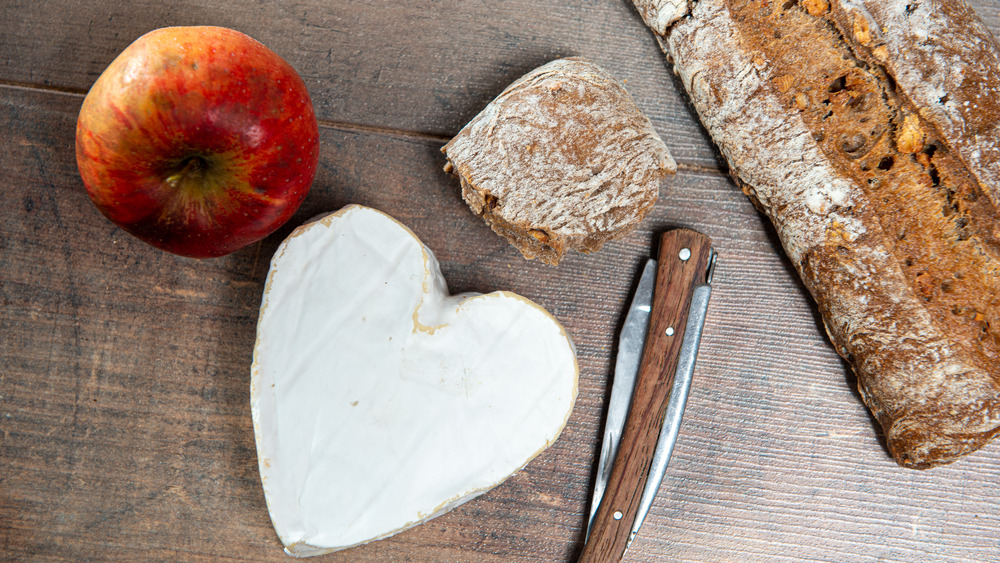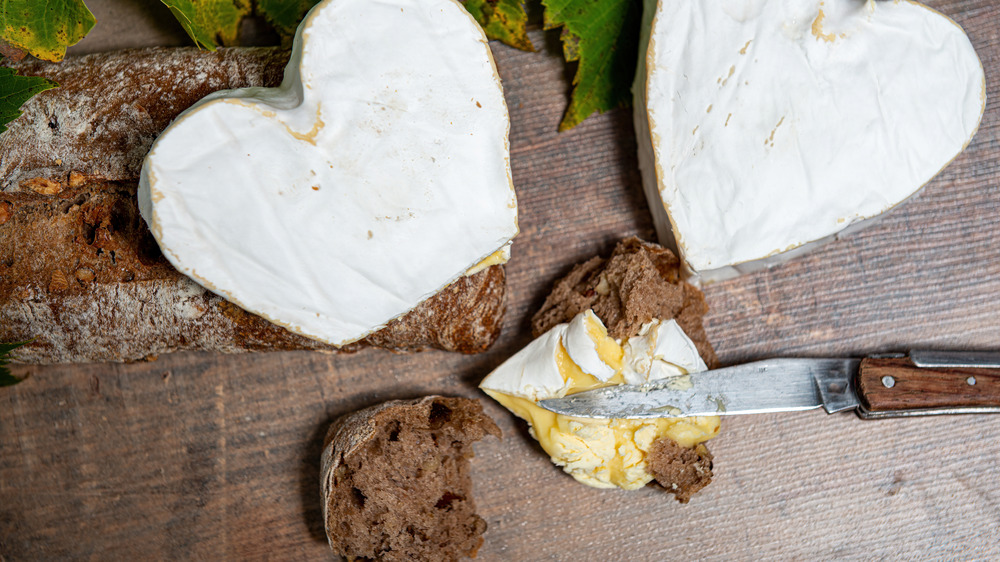What Is Neufchâtel And What Does It Taste Like?
Neufchâtel is much more than just a fun name — it's also absolutely delicious. Creamy, intensely smooth, and mildly flavored, it is an exceptional addition to tons of recipes, both savory and sweet. It is spreadable, rich, and has a slight tang. It is very similar to — and often conflated with — cream cheese, and it also shares some flavor profiles in common with mascarpone, crème fraîche, and fromage blanc, but its closest "relative" is actually brie.
The Kitchn notes that Neufchâtel dates back to the 6th century and hails from the town it's named after: Neufchatel-en-Bray, which is located in Normandy, France; it is "name protected." It's usually made with cow's milk. Cheese notes that the flavor is "mushroomy, nutty, salty, and sharp" and refers to its texture as "supple." It is pronounced NOOF-sha-tel, according to Oola. Amazingly enough, it is actually thought to have first originated around 1035. It is also often produced in many different shapes. Some artisanal Neufchâtels have a slightly grainy note.
Why is it heart-shaped?
It should also be noted that American Neufchâtel is exponentially different from French Neufchâtel. Traditional French Neufchâtel uses raw, unpasteurized cow's milk, whereas American Neufchâtel tends to use a mix of pasteurized milk and cream (via The Kitchn). Culture notes that the cheese has been sold in the states since the late 1800s. It is said that a "New York cheesemaker stumbled upon cream cheese in an attempt to recreate France's oldest cheese" — Neufchâtel, according to Culture. Another major differentiation between the two spreadable cheeses is the fat content, which varies exponentially between traditional cream cheese and traditional Neufchâtel.
One especially interesting Neufchâtel tale speaks to the cheese's trademark heart shape, which is said to have originated during the Hundred Years War, when young English soldiers would supposedly fall in love with French girls while the two countries were at war, which resulted in some cheesemakers actually forming the rind into a heart shape.
Neufchâtel can be used in cheesecakes, in savory dips, in cheese ball recipes, or even stirred into pasta dishes. It is also wonderful when simply paired with crusty bread and perhaps some jam. It also pairs well with a crisp, white wine and, obviously, when slathered on a bagel. When you're next in need of some cream cheese, why not switch things up and instead buy some Neufchâtel? We bet you'll become a big fan.

